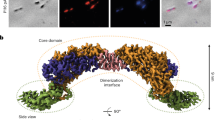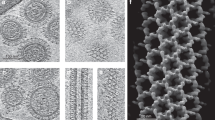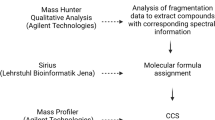Abstract
UNLIKE bacteria, mycoplasmas do not have a rigid cell wall1,2, but they are bounded by a triple layered limiting mombrane 70–80 Å thick3. Immunological reactions with these organisms have been studied by a number of techniques, of which growth inhibition and haemagglutination inhibition are believed to represent reactions with the surface of the organism4,5. Whole mycoplasma cells of different species have been chemically fractionated by various workers4,6–10 and found to contain carbohydrates, proteins and lipids. Studies, particularly on Mycoplasma pneumoniae, have shown that most of the antigenic activity is associated with lipids which react with antibody, and when combined with protein stimulate antibody, including growth-inhibiting antibody4. It is tempting to believe that these lipids have been extracted from the cell membrane because lipids are an integral part of membranes of many cells. Physical methods have been described for the preparation of isolated membranes from mycoplasmas11 and we have isolated membranes from the serologically distinct organisms M. gallisepticum (S6) and M. pneumoniae (FH) and have attempted to stimulate, in particular, growth-inhibiting antibody with them.
This is a preview of subscription content, access via your institution
Access options
Subscribe to this journal
Receive 51 print issues and online access
$199.00 per year
only $3.90 per issue
Buy this article
- Purchase on Springer Link
- Instant access to full article PDF
Prices may be subject to local taxes which are calculated during checkout
Similar content being viewed by others
References
Morton, H. E., Lecce, J. G., Oskay, J. J., and Coy, N. H., J. Bact., 68, 697 (1954).
Klieneberger-Nobel, E., and Cuckow, F. W., J. Gen. Microbiol., 12, 95 (1955).
Van Iterson, W., and Ruys, A. C., J. Ultrastruct. Res., 3, 282 (1960).
Sobeslavsky, O., Prescott, B., James, W. D., and Chanock, R. M., J. Bact., 91, 2126 (1966).
Manchee, R. J., and Taylor-Robinson, D., J. Gen. Microbiol. (in the press).
Buttery, S. H., and Plackett, P., J. Gen. Microbiol., 23, 357 (1960).
Plackett, P., Buttery, S. H., and Cottew, G. S., Rec. Prog. Microbiol., 8, 535 (1963).
Kenny, G. E., and Grayston, T. E., J. Immunol., 95, 19 (1965).
Prescott, B., Sobeslavsky, O., Caldes, G., and Chanock, R. M., J. Bact., 91, 2117 (1966).
Lemcke, R. M., Marmion, B. P., and Plackett, P., Ann. NY Acad. Sci. (in the press).
Razin, S., Argaman, M., and Arigan, J., J. Gen. Microbiol., 33, 477 (1963).
Somerson, N. L., James, W. D., Walls, B. E., and Chanock, R. M., Ann. NY Acad. Sci. (in the press).
Taylor-Robinson, D., Purcell, R. H., Wong, D. C., and Chanock, R. M., J. Hyg., Cambridge, 64, 91 (1966).
Purcell, R. H., Taylor-Robinson, D., Wong, D. C., and Chanock, R. M., Amer. J. Epidemiol., 84, 51 (1966).
Author information
Authors and Affiliations
Rights and permissions
About this article
Cite this article
WILLIAMS, M., TAYLOR-ROBINSON, D. Antigenicity of Mycoplasma Membranes. Nature 215, 973–974 (1967). https://doi.org/10.1038/215973a0
Received:
Issue Date:
DOI: https://doi.org/10.1038/215973a0
This article is cited by
-
Serological tests onl-phase variants of some bacteria
Medical Microbiology and Immunology (1973)
-
Killing of mycoplasmas by the antibodies to foreign antigens acquired by the organisms from the growth medium
Medical Microbiology and Immunology (1972)
Comments
By submitting a comment you agree to abide by our Terms and Community Guidelines. If you find something abusive or that does not comply with our terms or guidelines please flag it as inappropriate.



